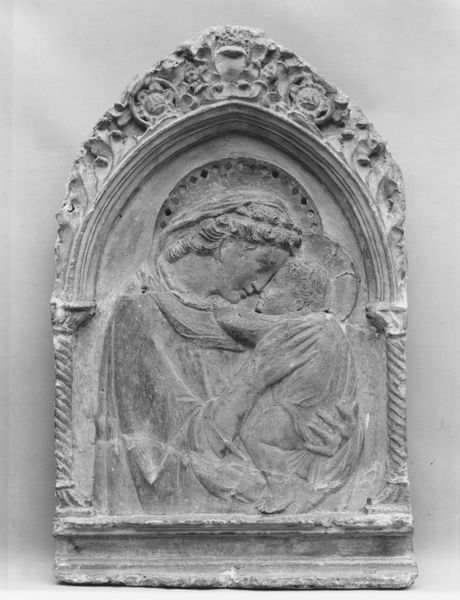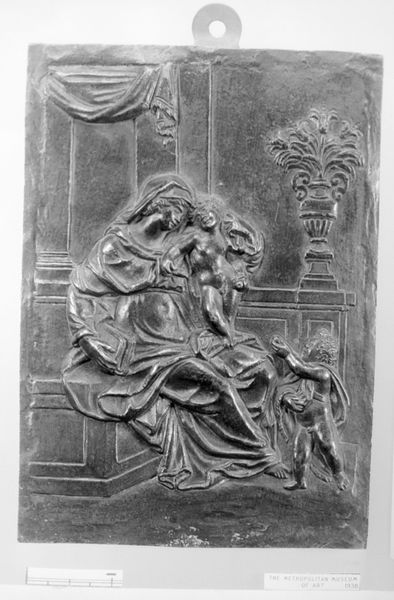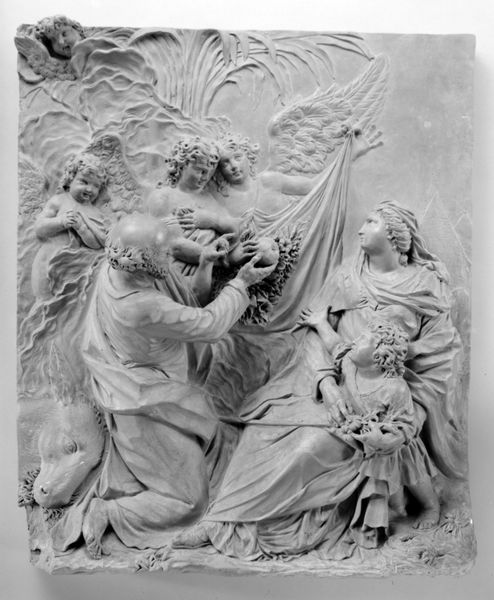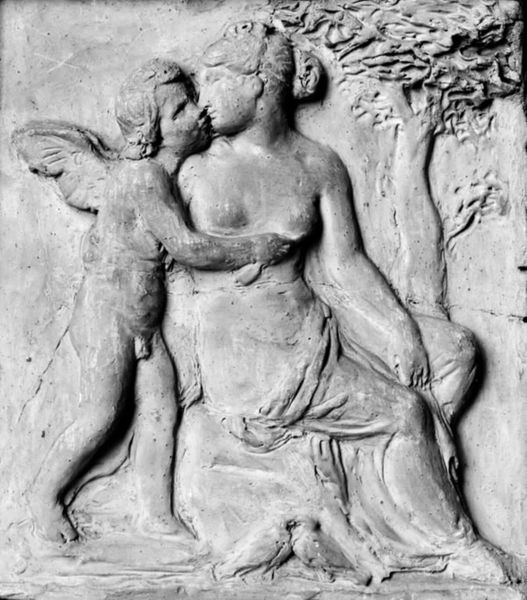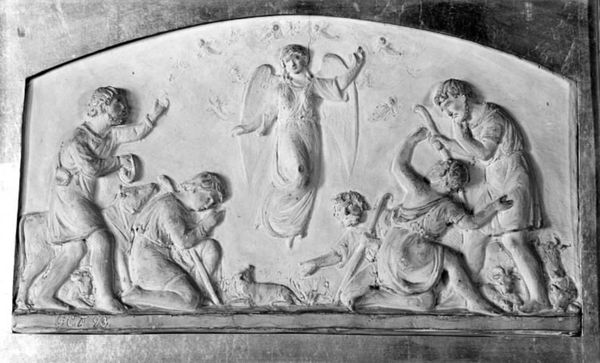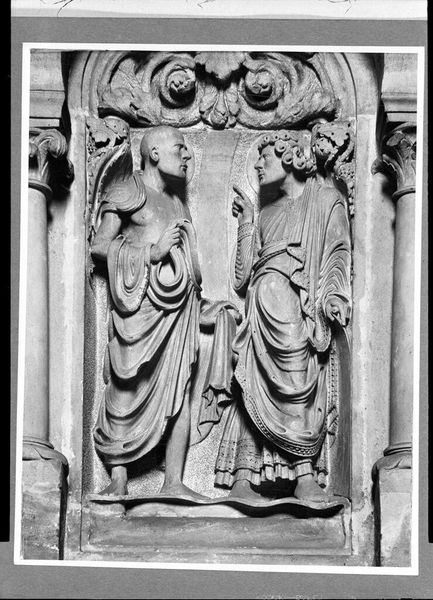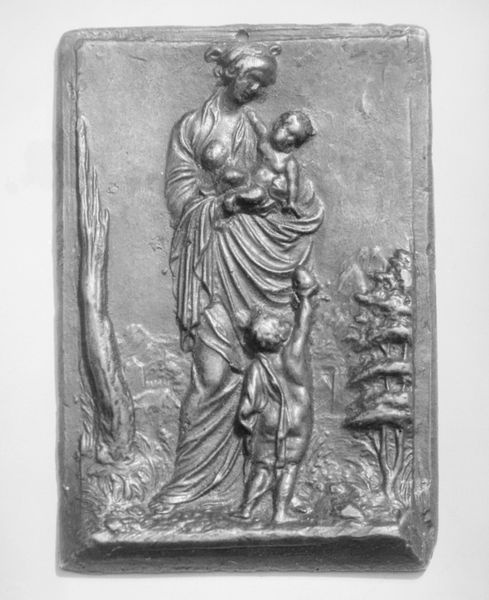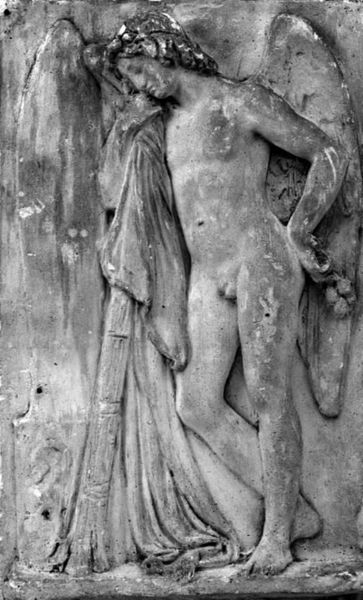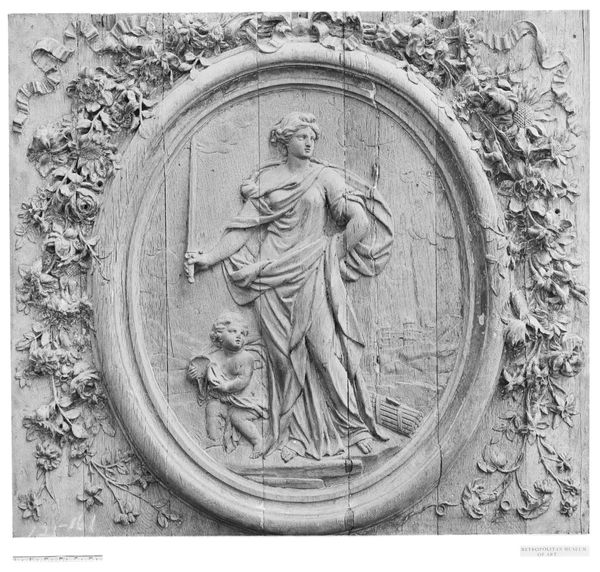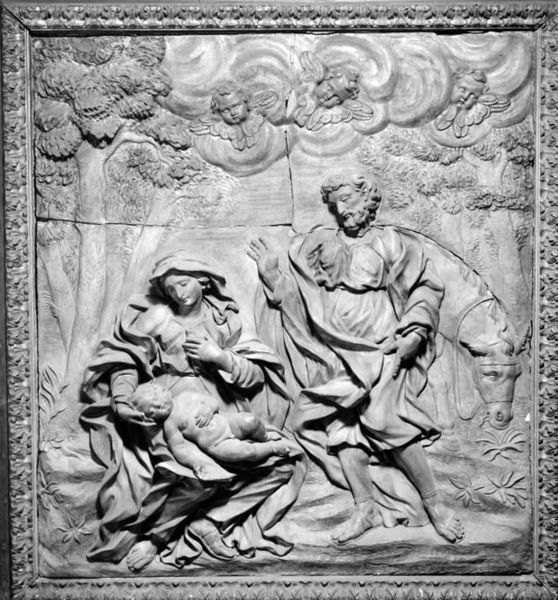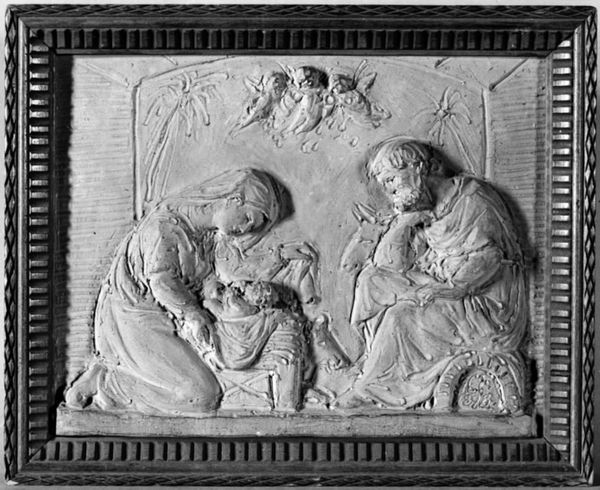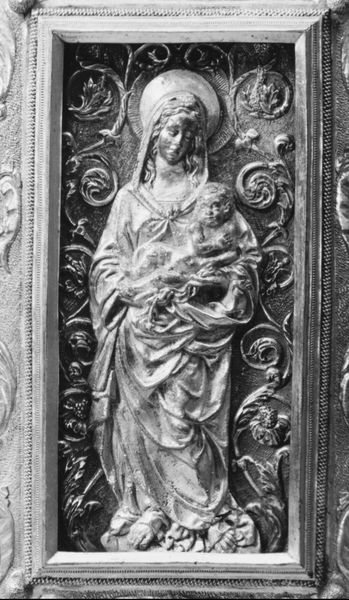
Maria, den lille Johannes Døberen og to engle tilbeder Jesusbarnet 1450 - 1525
0:00
0:00
relief, sculpture
#
portrait
#
medieval
#
sculpture
#
relief
#
figuration
#
sculpture
#
monochrome
#
italian-renaissance
Dimensions: 47 cm (height) x 37 cm (width) x 7.5 cm (depth) (netto)
Editor: This relief sculpture, titled "Maria, den lille Johannes Døberen og to engle tilbeder Jesusbarnet," dating from around 1450 to 1525, really strikes me with its somber mood, despite the cherubic figures. It almost feels like a lament. How do you interpret this work, especially considering its historical context? Curator: That's a keen observation. This piece compels us to think about the socially constructed roles of motherhood and sacrifice, particularly during the late medieval/early Renaissance period. How does depicting Mary, not in divine glory, but in apparent contemplation, perhaps even sorrow, challenge the expected narratives of the time? What do you think the inclusion of the young John the Baptist adds to the piece’s emotional weight? Editor: I hadn’t considered John's role. Seeing him alongside the infant Jesus and Mary suggests a premonition of their combined, ultimately tragic, destinies. Does the artist's choice to work in relief, rather than a more "grand" format, have something to say? Curator: Absolutely. Relief sculpture, with its more intimate scale and monochrome appearance, perhaps emphasizes the humanness of these religious figures. It moves the scene away from pure exaltation, allowing space for contemplating complex feelings around faith, power, and maternal experiences within a patriarchal society. What implications might those complexities have for us today? Editor: So, beyond the religious narrative, it's inviting a broader conversation about womanhood and power structures? Curator: Precisely. It invites a crucial discourse on art as a mirror reflecting social norms and biases and a stage upon which figures resist or reshape those narratives, consciously or unconsciously. Editor: I see the piece so differently now! It’s not just a religious scene, but a commentary on the human condition, then and now. Curator: Indeed, understanding this relief requires a willingness to excavate its deeper resonances.
Comments
No comments
Be the first to comment and join the conversation on the ultimate creative platform.
